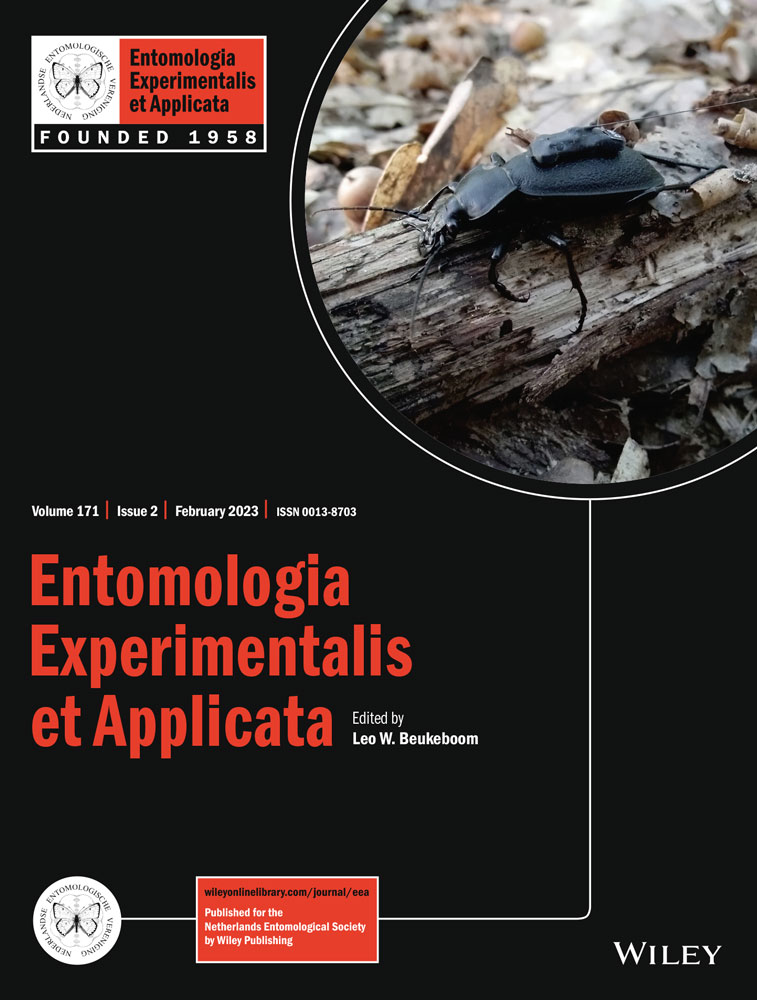Ver ítem
- xmlui.general.dspace_homeCentros Regionales y EEAsCentro Regional Mendoza - San JuanEEA San JuanArtículos científicosxmlui.ArtifactBrowser.ItemViewer.trail
- Inicio
- Centros Regionales y EEAs
- Centro Regional Mendoza - San Juan
- EEA San Juan
- Artículos científicos
- Ver ítem
Sexual competitiveness of sterile Ceratitis capitata males exposed to essential oils from non-host plant species native to Argentina
Resumen
The sterile insect technique (SIT) is used to control fruit fly pests, such as the Mediterranean fruit fly (medfly), Ceratitis capitata (Wiedemann) (Diptera: Tephritidae). Enhancing sexual competitiveness of mass-reared sterile males can contribute to making
this technique more effective. It has been shown that exposure to volatiles from essential oils (EOs), such as ginger root oil (GRO) and those from host fruits, increases male mating success. We
[ver mas...]
The sterile insect technique (SIT) is used to control fruit fly pests, such as the Mediterranean fruit fly (medfly), Ceratitis capitata (Wiedemann) (Diptera: Tephritidae). Enhancing sexual competitiveness of mass-reared sterile males can contribute to making
this technique more effective. It has been shown that exposure to volatiles from essential oils (EOs), such as ginger root oil (GRO) and those from host fruits, increases male mating success. We evaluated the effect of EOs from non-host species native to
Argentina, Schinus polygama (Cav.) Cabrera (Anacardiaceae) and Baccharis spartioides (Hook. & Arn.) Remy (Asteraceae), on the sexual competitiveness of sterile C. capitata males. In field cage experiments, sterile males exposed to S. polygama EO increased
their mating success. In addition, sterile males exposed to this EO achieved more matings on trees than non-exposed males, thus suggesting the former are more prone to locate and defend the pheromone-calling territory. Deprivation of water and/or food
significantly reduced males' life span, but exposure to S. polygama EO and GRO did not affect their survival. Schinus polygama EO is composed of mono-and sesquiterpenes with behavioral and electroantennographic responses in medflies, indicating that
semiochemicals that boost medfly sexual competitiveness combine in this EO.
[Cerrar]

Autor
Jofré Barud, Flavia;
Gomez, María Pía;
Ruiz, María Josefina;
Bachmann, Guillermo Enrique;
Goane, Lucía;
Segura, Diego Fernando;
Lara, Natalia;
Murúa, Fernando;
Asfennato, Alejandro;
Gómez, Érica;
Ruiz, Cynthia;
Garavelli, Esteban;
Vera, María Teresa;
Lopez, María Liza;
Fuente
Entomologia Experimentalis et Applicata 171 (2) : 146-155 (February 2023)
Fecha
2023-02
Editorial
Wiley
ISSN
1570-7458
Formato
pdf
Tipo de documento
artículo
Palabras Claves
Derechos de acceso
Restringido
 Excepto donde se diga explicitamente, este item se publica bajo la siguiente descripción: Creative Commons Attribution-NonCommercial-ShareAlike 2.5 Unported (CC BY-NC-SA 2.5)
Excepto donde se diga explicitamente, este item se publica bajo la siguiente descripción: Creative Commons Attribution-NonCommercial-ShareAlike 2.5 Unported (CC BY-NC-SA 2.5)


